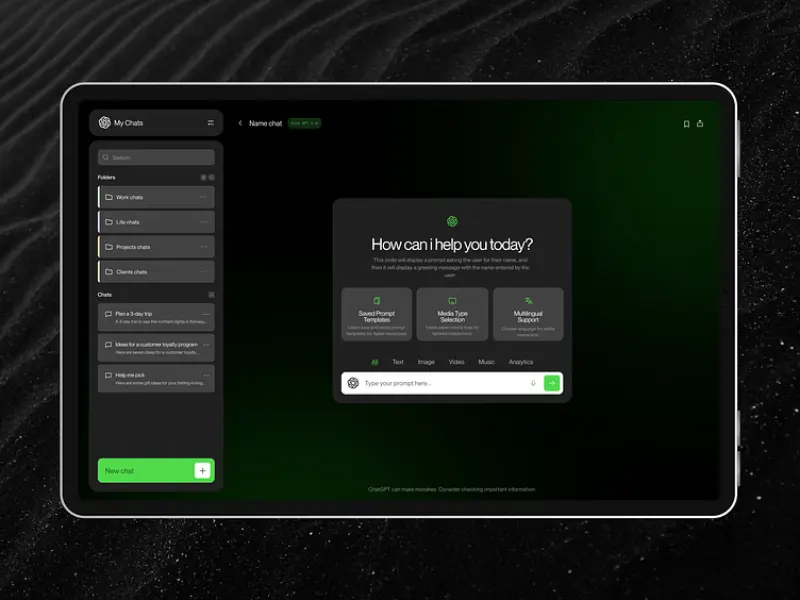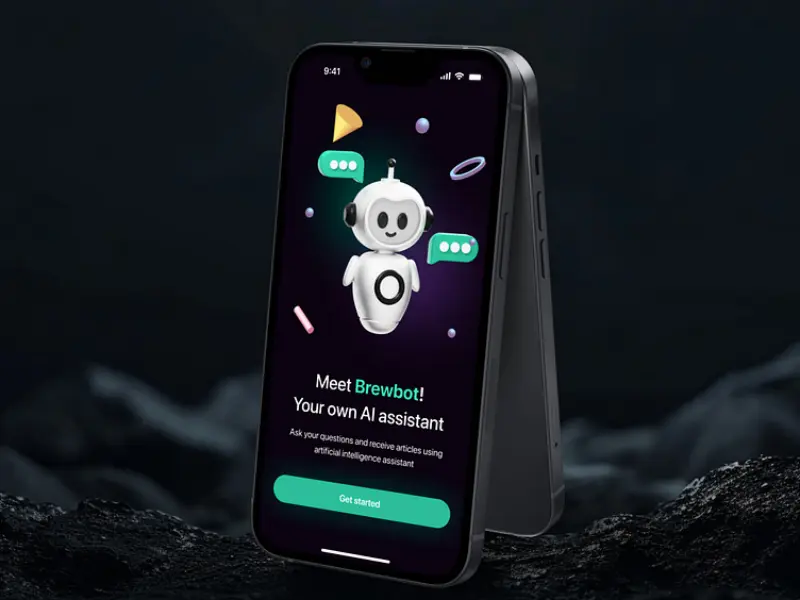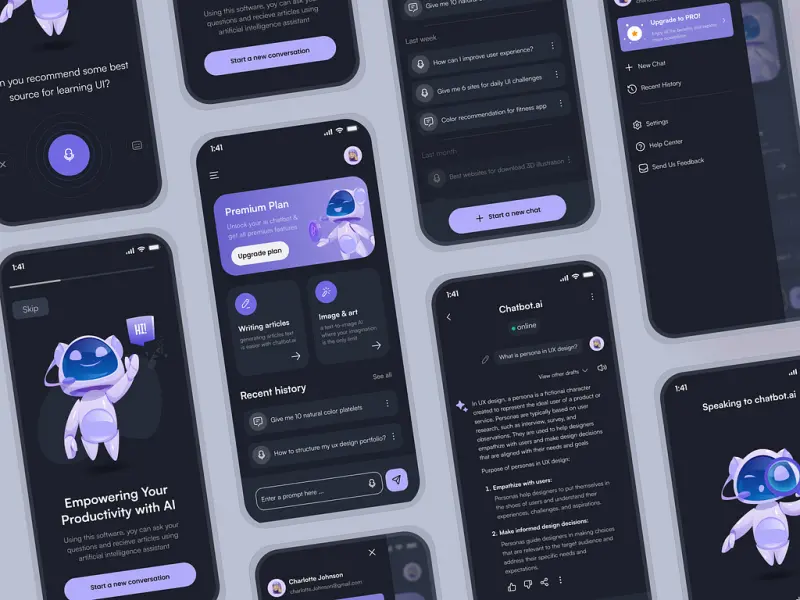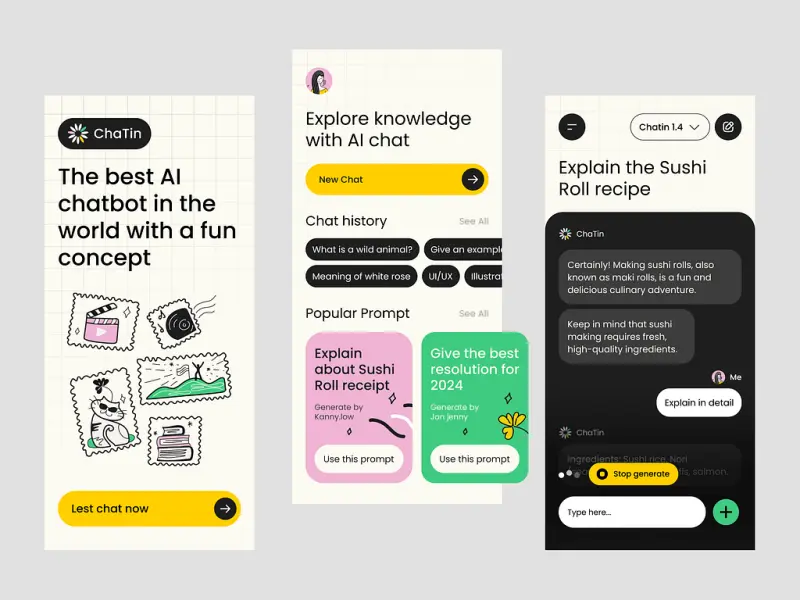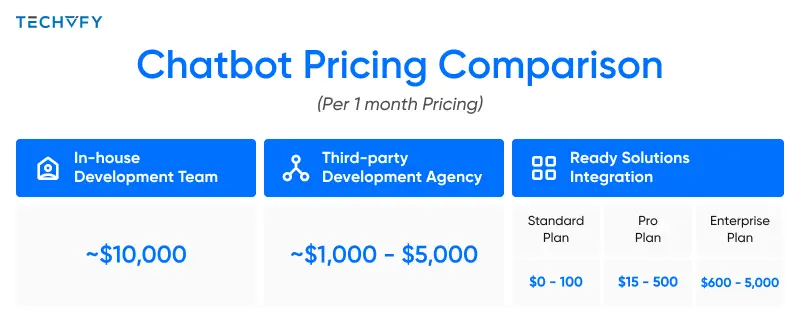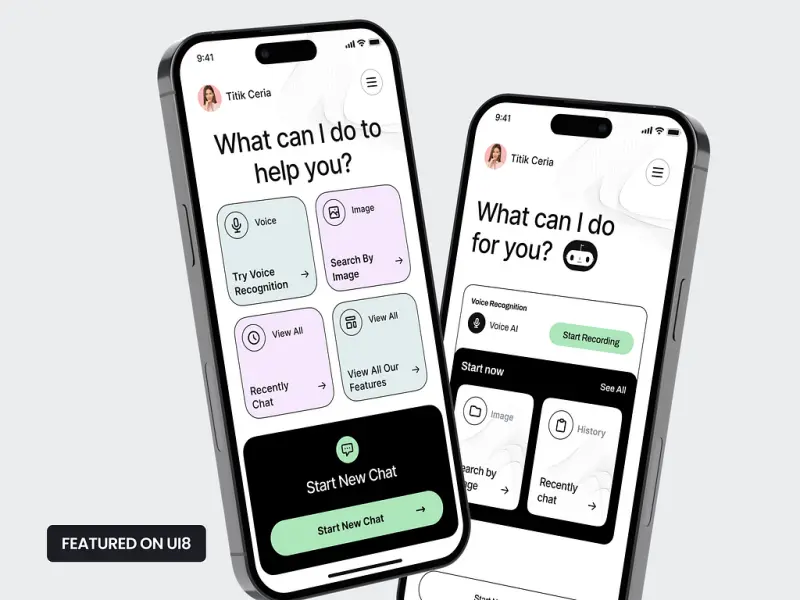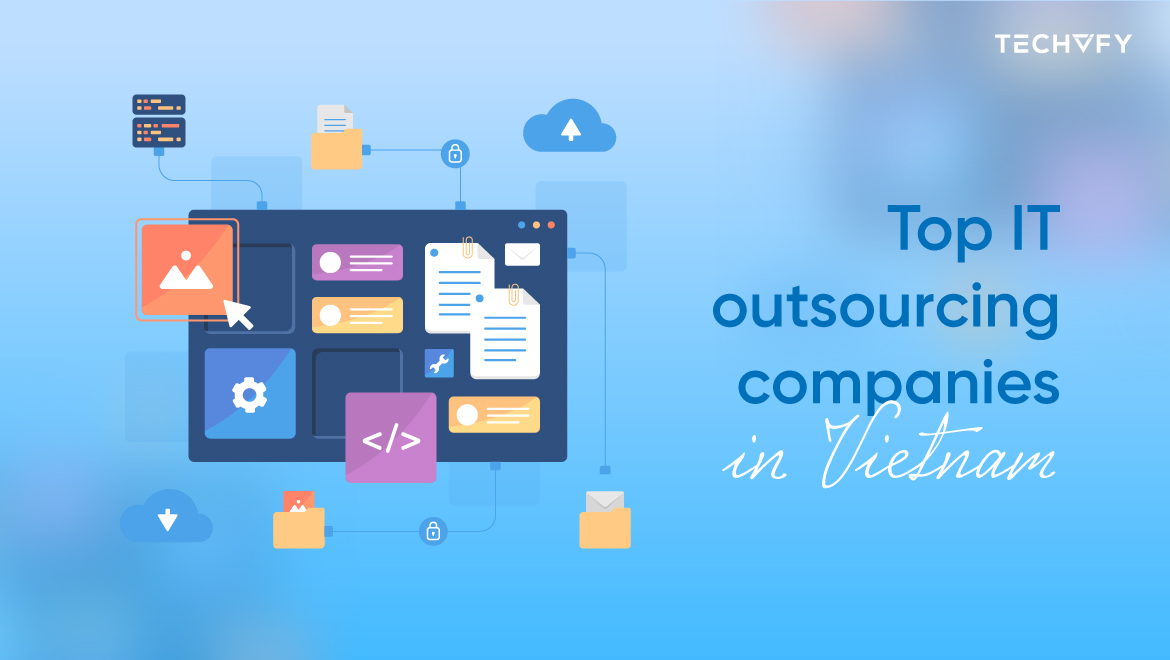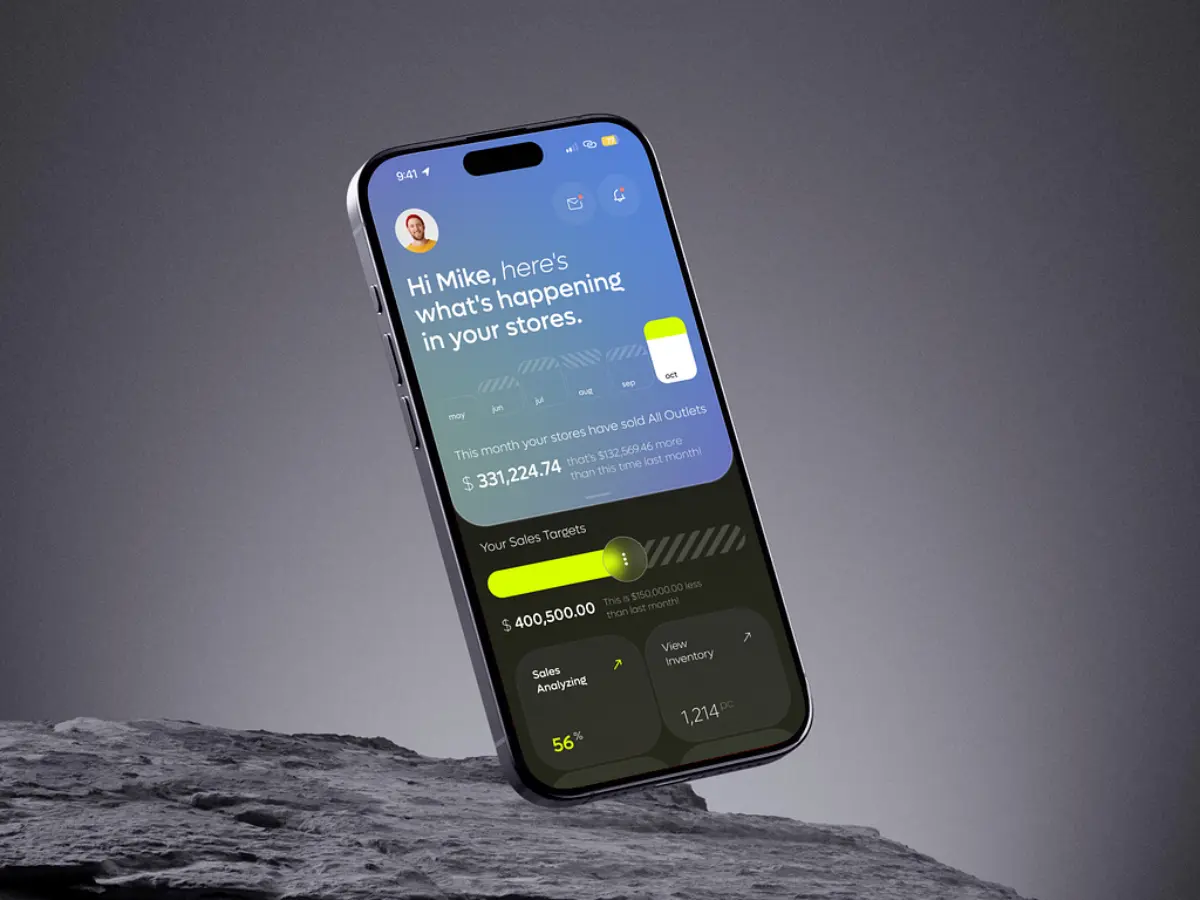AI Chatbot Pricing: The Only Guide You Need in 2025
- TECHVIFY Team
- 0 Comments
Consumer expectations are rapidly evolving, and chatbots are becoming a standard communication tool. This trend underscores the growing importance of businesses exploring conversational solutions and offering optimized experiences that meet modern demands.
As a decision-maker, you’re likely weighing the benefits of integrating chatbots against the financial implications. To help you understand the full potential these interactive agents hold for your business, we’ve compiled a compelling set of chatbot statistics and insights. Before diving into the integration process, it’s crucial to understand how much does AI chatbot cost and potential return on investment (ROI).
By the end of this guide, you’ll have a thorough grasp of the elements that affect AI chatbot pricing, the financial considerations for different business sizes, and the best practices to follow when selecting a chatbot solution. This knowledge will enable you to make informed, key choices that propel your business ahead in an increasingly digital world.
I. Why Should You Care About The Cost of Chatbot?
When you first see the AI chatbot pricing, it might seem straightforward, but it often doesn’t tell the whole story. Sure, chatbots can handle customer interactions at a much lower cost than human agents—usually between $0.50 and $0.70 per interaction. But what really affects the total AI chatbot cost investment?
AI chatbot visualize
Integrating with Your Existing Technology
If your existing systems are outdated, connecting a chatbot to them might require custom solutions or even partial updates, which can drive up costs. Open-source tools can offer flexibility, but using them often means you’ll need more skilled developers, which can be more expensive.
Protecting Your Data
Simple chatbot platforms might make it easy for employees to bypass security measures just to get things done quickly. This can leave your company vulnerable to risks. In industries with strict regulations, fines for data breaches can be significant. It’s better to invest in a secure chatbot from the start to avoid costly penalties later.
Learn more on:
How AI Chatbot for Small Business Revolutionizes Customer and Team Interactions
10 Best AI chatbot solutions to Boost Customer Engagement in 2025
Monitoring and Improving Performance
Basic analytics won’t give you the insights you need to really improve your chatbot. Look for platforms that offer detailed insights into how users interact with your bot, like analyzing what they want and how they feel—even if these platforms cost a bit more. Some analytics providers might claim rights to your data, so choosing a solution that lets you control your information is important.
Custom chatbots that are designed specifically for your business can deliver the best results, but they’re usually the most expensive option.
Deciding on Deployment
Cloud-based software usually allows for quicker updates and changes, while on-site solutions might take longer to deploy when updates are needed. Be careful with cloud providers whose pricing makes it hard to move your bot or its data later on, as this could lead to higher costs in the long run.
Considering Industry Requirements
In regulated industries, a chatbot isn’t just a communication tool—it’s also a potential legal risk. To avoid problems down the road, invest in thorough auditing processes and work with a development team that understands your industry. Even within regulated fields, different areas—like medical devices versus insurance—might have their own specific standards, adding more complexity.
Automation is becoming more urgent every day. McKinsey predicts that nearly half of all work activities will be automated by 2045, and Gartner estimates that conversational AI, which powers chatbots, will save contact centers a staggering $80 billion by 2026. These numbers make it clear: automation isn’t a question of “if,” but “when.”
So, now is the perfect time to look at the available AI chatbot pricing models. Generally, these options fall into two categories: custom software designed specifically for your business and chatbot-as-a-service (CaaS) solutions, which include most of the products you can find online. Let’s take a closer look at both to help you find the best fit for your needs.
Have a Project Idea in Mind?
Get in touch with experts for a free consultation. We’ll help you decide on next steps, explain how the development process is organized, and provide you with a free project estimate.
II. Full Breakdown of AI Chatbot Pricing
1. Custom AI Chatbot Pricing
AI-powered customer service is transforming the way businesses operate. A 2022 Salesforce study found that organizations using chatbots are more than twice as likely to achieve outstanding results. Moreover, these conversational tools free up human employees, with 64% of agents using AI tools able to spend more time-solving complex issues. However, enjoying these benefits comes at a cost. Custom AI bots, built specifically for your needs, are the most expensive option. Let’s dive into the two main routes for custom development: building in-house and hiring an agency. The costs can vary depending on the type of software and features you need. So, how much does it actually cost to create a chatbot?
AI chatbot application
#1: In-House Development: Building from Scratch
Creating an in-house chatbot means putting together a team with a wide range of skills, which involves significant upfront costs. Here’s a look at the key roles you’ll need, along with their average U.S. salaries (these numbers are estimates and can differ depending on experience and location):
- Project Manager (~$88,000): Oversees the entire project, making sure it stays within budget and on schedule.
- Chatbot Developer ($90,000 – $120,000): Skilled in programming languages like Python and Java, and familiar with development platforms like Rasa or Dialogflow.
- Natural Language Processing (NLP) Engineer ($110,000 – $140,000): Specializes in training the chatbot to understand and respond to human language.
- User Interface/User Experience (UI/UX) Designer ($80,000 – $110,000): Designs a user-friendly and intuitive interface.
- QA Tester ($70,000 – $90,000): Ensures the chatbot works flawlessly and delivers a positive experience to users.
Cost Breakdown by Complexity
-
Rule-Based Chatbot ($50,000 – $100,000): This is the simplest and most budget-friendly option. It operates based on predefined rules and decision trees, making it ideal for handling simple, frequently asked questions or basic troubleshooting. However, its limitations become apparent in more complex scenarios, as it can’t understand natural language nuances or adapt to unexpected queries.
-
AI Chatbot ($100,000 – $200,000): This option uses machine learning algorithms to analyze large amounts of conversation data and user interactions. Over time, the AI learns to recognize patterns and understand user intent, enabling it to provide more relevant responses. AI chatbots are well-suited for a broader range of inquiries, including those requiring explanation or problem-solving. They can also integrate with CRM systems or knowledge bases to access and share relevant information during conversations.
-
Generative AI Chatbots ($200,000+): These are at the forefront of technology, using advanced AI techniques like advanced learning algorithms and natural language processing to create text that closely resembles human writing. This allows the chatbot to engage in nuanced conversations, mimicking natural human interactions. Generative AI bots are ideal for situations where creative text generation or highly personalized communication is key. For instance, they can be used to craft marketing copy, provide tailored product recommendations, or even generate different creative texts, like poems or code.
Hidden Challenges of In-House Development
Building an in-house team to develop a chatbot might seem like a straightforward solution, but there are challenges that companies often overlook. Projects driven solely by IT departments might work on a technical level and even scale effectively, but they can fall short in terms of customer experience. Often, the importance of conversation design—how the chatbot interacts with users—is considered only after the project is underway.
Another common mistake is thinking that the AI chatbot cost is a one-time expense. In reality, there are ongoing costs for maintenance, updates, training, and scaling as your user base grows. The operating costs can vary widely based on the option you select and the scale of your business, and the chatbot’s functionality. These could range from a basic subscription plan to covering the salaries of an entire department.
#2: Chatbot Agency: Expertise When You Need It
Building an in-house team gives you full control over your chatbot project, but it can be expensive and time-consuming. Partnering with a chatbot development agency in Vietnam offers a different approach—one that focuses on speed and potentially lower upfront costs. Let’s dive into the cost breakdown for various chatbot types in Vietnam.
Understand AI chatbot pricing
Cost Breakdown by Complexity
-
Rule-Based Chatbot ($5,000 – $15,000): Vietnamese agencies can often develop these simple bots more affordably than building an in-house team. Their experience with pre-built structures and efficient workflows makes the process smoother and more cost-effective.
-
AI Chatbot ($25,000 – $50,000+): AI chatbot cost can vary depending on the level of customization and features you need. While this might be slightly more expensive than developing in-house, the benefits include quicker turnaround times and access to a broader range of specialists due to the agency’s expertise.
-
Generative AI Chatbot ($50,000+): These advanced bots require specialized skills, so agencies may charge a premium. However, the overall cost in Vietnam might still be comparable to or even lower than building an internal team, particularly when you factor in the challenge of hiring and training NLP engineers with expertise in deep learning and natural language generation.
Payment Models
Agencies in Vietnam generally offer several payment models:
- Hourly Rates: $20 – $100+ per hour, depending on the specialist’s experience and the agency’s location.
- Project-Based Fees: $5,000 – $100,000+ depending on the complexity and features of the chatbot.
- Retainer Model: A monthly fee (starting around $1,000) for ongoing maintenance and support.
Advantages of Working with a Vietnamese Agency
-
Faster Development: Agencies in Vietnam typically have pre-assembled teams with the necessary expertise, allowing them to complete projects more quickly than assembling an in-house team from scratch.
-
Lower Costs: Outsourcing to a Vietnamese agency eliminates the need to hire and manage full-time staff, which can significantly reduce overall expenses, especially for simpler projects.
-
Access to Expertise: Vietnamese agencies have experience in developing chatbots for various industries and purposes, enabling you to tap into their expertise to develop a solution tailored to your specific needs.
Let’s talk
A consultation with the Client Relationship Manager, who represents TECHVIFY, without any commitment from your side, will give you:
- Structured and clear vision of your future application
- Information about how our software development company guarantees 100% on-time and on-budget delivery
- Recommendations for choosing the tech stack
- Advice on further steps
- Business-side recommendations
- Rough project estimation on software development
TECHVIFY is right where you need. Contact us now for further consultation:
Success Stories from Vietnam
-
Tiki Enhances Customer Support: Tiki, a leading Vietnamese e-commerce platform, implemented a chatbot to handle basic customer inquiries. This led to a 40% reduction in operational costs within the first year and a significant improvement in customer satisfaction, as the bot efficiently managed frequent queries and allowed human agents to focus on more complex issues.
-
Vietcombank Streamlines Services: Vietcombank, one of Vietnam’s largest banks, adopted an AI-powered chatbot to assist customers with routine transactions, account information, and inquiries. This innovation resulted in a 30% decrease in call center workload and higher customer engagement rates, as customers could quickly access information and services without waiting for a human representative.
These examples highlight the wide-ranging benefits of conversational solutions. Through the automation of routine tasks and offering around-the-clock support, chatbots free up human agents to focus on more complex customer interactions. This not only leads to a more efficient workforce and happier clients but also delivers a substantial ROI that justifies the initial cost of the chatbot.
2. Chatbot as a Service Pricing
Chatbot as a Service (CaaS) provides a convenient and often cost-effective way to get the functionality you need without the hassle of building a solution from scratch. However, it’s important to understand the different subscription models available and how well they fit your company’s size and needs. Here’s a breakdown to help you choose the right option.
Deep dive into AI chatbot cost
Small Companies
Many CaaS platforms offer free tiers that come with limited features and capabilities. These plans can be a good starting point if you’re just exploring chatbot technology, but they usually limit the complexity of conversations, the number of user interactions, and the amount of data you can store. While these plans might work for very basic applications, they likely won’t provide the power and flexibility needed for more complex tasks, such as customer service or lead generation. Small businesses might also find a pay-per-request model appealing, where you pay only for the chatbot interactions you use. We’ll dive deeper into this option in the next section.
Mid-Size Companies
For mid-sized companies, most CaaS providers offer tiered subscription plans with varying features and limitations. These plans typically include a set number of monthly conversations, data storage capacity, and access to specific features. It’s important to carefully assess your needs and choose a plan that gives you the features you need without paying for extras you won’t use. If your business has unique workflows or needs a chatbot that matches your brand’s voice closely, a custom solution might be a better fit, offering more tailored functionality.
Customized Enterprise Chatbots
Most CaaS providers offer customized enterprise plans for large-scale deployments and complex requirements. These plans are usually tailored to meet the specific needs of your organization and often come with dedicated account management and support. While this level of customization can be very beneficial, it’s crucial to weigh the costs against the potential gains. In some cases, a custom-developed chatbot might be more cost-effective in the long run, especially if you need a high level of control over the chatbot’s design, integration, and data security.
Free Chatbots
Free chatbot solutions can be tempting, but it’s worth remembering the saying, “You get what you pay for.” These options often come with substantial limitations in terms of functionality, customization, and scalability. While they might be good for basic testing or experimentation, they’re unlikely to meet the needs of a growing business that requires more robust capabilities.
Pay-Per-Request
Pay-per-request plans can be a good option for companies with unpredictable chat volumes. This model charges you based on the number of chatbot interactions, which can be cost-effective if your usage varies. However, the costs can add up quickly for businesses that expect consistent or high levels of user engagement. When choosing this option, it’s important to consider your potential for growth and scaling from the very beginning.
CaaS AI Chatbot Pricing Comparison
Choosing the Right CaaS Plan
As you can see, the ideal CaaS subscription plan depends on the size of your company, your budget, and your chatbot needs. While CaaS offers an easy way to get started, custom development solutions provide unmatched flexibility, control, and scalability. Take the time to carefully assess your requirements and weigh the pros and cons of each approach before making your decision.
Learn More On:
III. How to Choose the Chatbot Vendor That Fits Your Needs
Choosing the right chatbot vendor is crucial to ensure you get the best value for your investment, whether you’re selecting an off-the-shelf solution or building a custom chatbot. To make the right choice, consider the following best practices:
1. Define the Objective
Start by clearly defining what you want your chatbot to achieve. This includes several key factors:
- Deployment Channels: Decide on the platforms where the chatbot will be used (e.g., website, social media, messaging apps) and estimate the number of users it should reach.
- Application Area: Identify the primary purpose of the chatbot—whether it’s for sales, customer service, marketing, or another area.
- Conversational Tone: Determine the tone and style of communication the chatbot should use to align with your brand’s voice.
- Integration Needs: Consider whether the chatbot needs to connect beyond standard API integrations, such as linking with your CRM, ERP, payment gateways, or other critical systems.
- Advanced Capabilities: Assess whether the chatbot requires advanced Natural Language Processing (NLP), Machine Learning (ML), or generative AI features. For example, a lead generation chatbot will likely need sophisticated AI, while a simple FAQ chatbot can rely on rule-based logic.
- Customization Level: Determine how much customization you need. Off-the-shelf solutions might offer limited flexibility, while custom-built chatbots can be tailored to meet your exact requirements.
AI chatbot for website
2. Estimate the Budget
Match your budget against the overall cost of ownership, whether you opt for a pre-built or a custom chatbot. Keep in mind that personalized chatbot development varies widely depending on complexity, features, and required integrations. Generally, custom solutions tend to be more expensive than enterprise packages offered by CaaS providers. Make sure to account for ongoing costs, such as maintenance, updates, and scaling as your business grows.
3. Identify & Evaluate Vendors
To narrow down your options, focus on vendors with a strong market presence. Here’s how to evaluate them:
- Employee Count: Vendors with a higher employee count often indicate a successful and established company, capable of handling complex projects and offering robust support.
- User Reviews: Check reviews on aggregator sites like G2, Capterra, or Trustpilot to see what other users have experienced.
- Case Studies: Review customer success stories, especially if they’re from your industry. If you’re in a data-sensitive field like healthcare, prioritize vendors who have experience in that sector.
- Free Trials & Demos: Take advantage of free chatbot trials and demos offered by vendors. This allows you to test their platforms and determine if they fulfill your requirements before committing.
4. Run a Proof of Concept (PoC)
Before fully committing to a chatbot vendor, running a Proof of Concept (PoC) is wise. A PoC involves creating a scaled-down, working version of the chatbot to evaluate its viability, performance, and efficiency. This approach offers several benefits:
- Validate Assumptions: Ensure that your initial assumptions about the chatbot’s capabilities and outcomes are correct.
- Evaluate Technical Requirements: Assess whether the chatbot can meet your technical needs, such as integrating with existing systems or handling the expected volume of interactions.
- Assess User Engagement: Measure how well the chatbot engages with users and whether it meets your customer service or sales goals.
- Identify Areas for Improvement: Use the insights gained from the PoC to refine the chatbot before full-scale deployment.
Following these steps, you can choose a chatbot vendor that aligns with your goals, fits your budget, and meets your technical and business needs. This thorough selection process can help you prevent costly mistakes and ensure that your chatbot delivers real value to your organization.
Conclusion
As chatbots become a key part of customer interactions, staying ahead is crucial for any business. This guide has helped you understand the costs involved, from hidden expenses to the benefits of different deployment options. By now, you should have a clear idea of what it takes to implement a chatbot solution that aligns with your business objectives, financial plan, and technical requirements.
But there’s more to do. Understanding AI chatbot pricing and choosing the right one and making sure it works well with your existing systems requires expertise and careful planning. That’s where we can help.
Ready to move forward? Contact TECHVIFY today for a free consultation and see how our chatbot development services can boost your business. Don’t delay—start automating your future with the right partner!
TECHVIFY – Global AI & Software Solution Company
From Startups to Industry Leaders: TECHVIFY prioritizes results, not just deliverables. Accelerate your time to market and see ROI early with high-performing teams, AI (including GenAI) Software Solutions, and ODC (Offshore Development Center) services.
- Email: [email protected]
- Phone: (+84)24.77762.666




